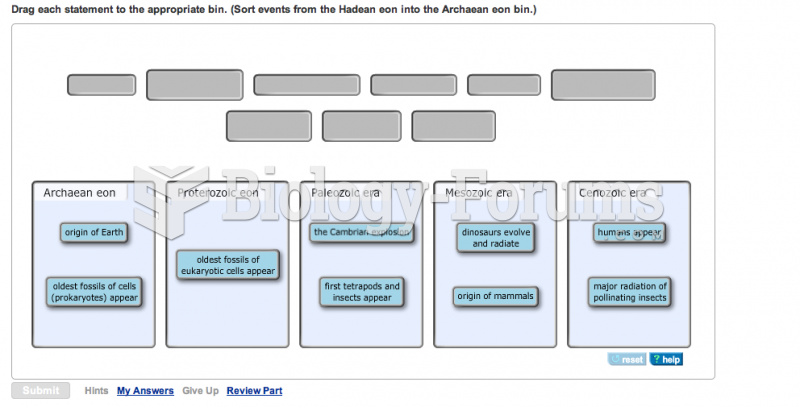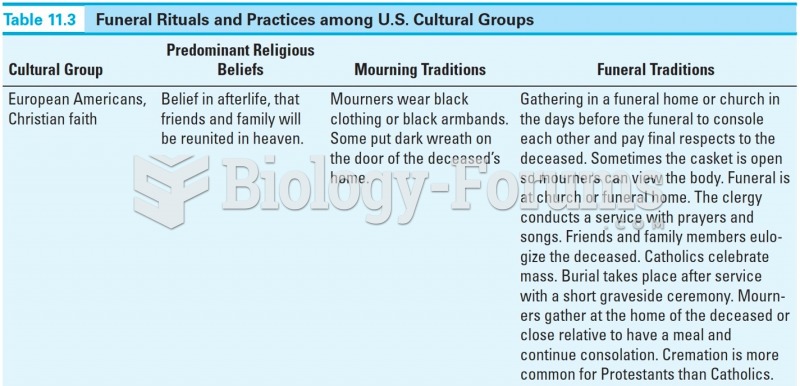|
|
|
Glaucoma is a leading cause of blindness. As of yet, there is no cure. Everyone is at risk, and there may be no warning signs. It is six to eight times more common in African Americans than in whites. The best and most effective way to detect glaucoma is to receive a dilated eye examination.
If all the neurons in the human body were lined up, they would stretch more than 600 miles.
Only one in 10 cancer deaths is caused by the primary tumor. The vast majority of cancer mortality is caused by cells breaking away from the main tumor and metastasizing to other parts of the body, such as the brain, bones, or liver.
People with high total cholesterol have about two times the risk for heart disease as people with ideal levels.
In 1864, the first barbiturate (barbituric acid) was synthesized.







